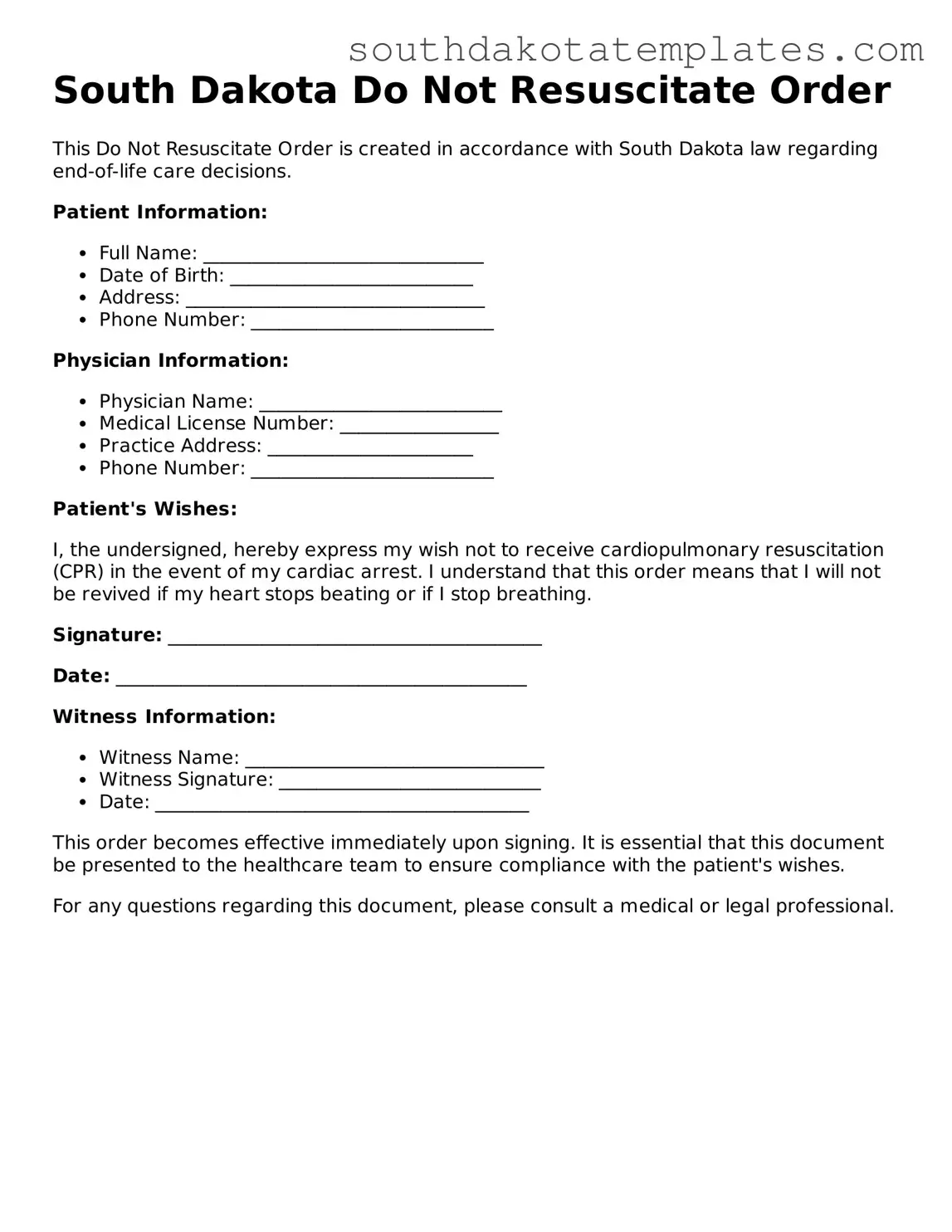Free South Dakota Do Not Resuscitate Order Document
A South Dakota Do Not Resuscitate Order (DNR) form is a legal document that allows individuals to express their wishes regarding medical treatment in the event of a life-threatening situation. This form ensures that healthcare providers respect a patient’s desire not to receive cardiopulmonary resuscitation (CPR) or other life-sustaining measures. Understanding and completing this form is crucial for individuals who wish to maintain control over their medical care.
Take the first step in ensuring your healthcare preferences are honored by filling out the DNR form. Click the button below to get started.
Get Do Not Resuscitate Order
